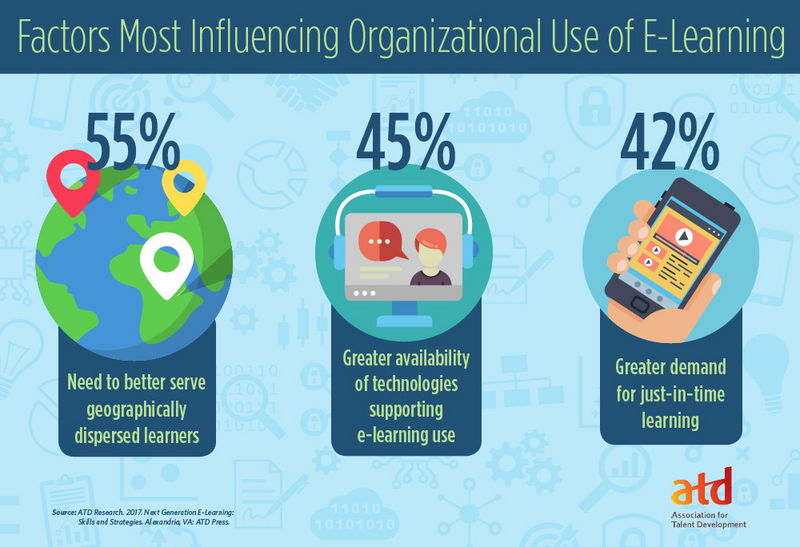ATD Blog
Technology Has Changed the How, But Education Is Still About the Learner
Tue Jul 31 2018

Can you imagine going through your workday without Googling something? Or a day without sending a text to a colleague, or exchanging a quick instant messaging conversation? Further, can you imagine going through a week without learning something new—whether via that Google search, or watching a quick YouTube tutorial, or learning a shortcut in Word or Excel?
Long gone are the days where we learned only by going to the classroom. Now we want information and knowledge during the moment of need, wherever we are, and we want learning geared toward who we are and what we’re interested in. What we’re demanding is personalized learning, and we’re asking for it in bite-sized portions.
The way we learn and take in information is changing in the blink of an eye. Take the 2017 ATD research, for example, that found that the percentage of top companies making a majority of their learning portfolio assets available via e-learning has tripled in five years, expanding from 8 percent to 27 percent.
Another 2017 ATD report found that, while 38 percent of companies were using microlearning, another 41 percent planned to add it in the coming year—with the top methods being self-paced e-learning, video, and visuals such as infographics.

This is all very exciting for the talent development industry.
Consider how these new methods of instruction have added to the level of engagement with and enjoyment of knowledge-sharing. Gamification is now being added to compliance courses, taking them from dense recitation of statutes to a game that allows participants to assume a character overcoming a compliance challenge with other characters as colleagues—doing so in a highly visual scheme with sound effects. Today’s technology also allows us, as social beings, to discuss strategy and possible solutions not only within our small group of classroom learners, but with colleagues around the globe.
This learning is good news for us as humans: we are curious by nature and want to take in information. On Footnote (a website that brings academic research to a broad audience), the article “Why Humans Are Hard-Wired for Curiosity” posited that learning could be intrinsically rewarding, and called primates “informavores.”
Learning isn’t about to slow down any time soon, perhaps because of our genetic thirst for information. But the pace of the business world also requires us to constantly hone our skills to compete and keep up. Indeed, researcher, scholar, and author John Seely Brown suggests that the half-life of a skill today is five years.
The way we learn will continue to expand and change. While augmented and virtual reality (AR/VR) may not have become mainstream overnight, they’re proving their worth now. A Brandon Hall Group study reported that 30 percent of respondents called AR/VR simulations for training a top learning priority in the next two years.
Doctors in training are performing surgery virtually; workers in the manufacturing industry are learning trades virtually and reducing injury; and retail staff are going through virtual exercises to help them, for instance, understand how to handle Black Friday crowds. These are just a few examples of how AR/VR is serving employees, organizations, and customers.
While technology has greatly changed the way trainers train and learners learn, one thing hasn’t changed: The learner is front and center in knowledge acquisition and skills application. In today’s fast-paced world, acquiring those skills means that training is no longer an event, but a constant.
You've Reached ATD Member-only Content
Become an ATD member to continue
Already a member?Sign In
